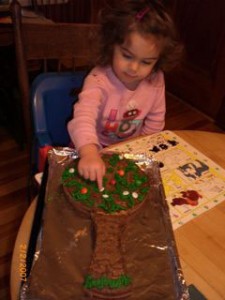Story: Ask The Land!
January 1st, 2016Chasidic story, Adapted by Shira Kline
©ShirLaLa 2007
Two farmers lived side by side for many generations. They had been neighbors for a long time but they weren’t very friendly with each other. Why is that you ask? Because once upon a time they had an argument about a certain olive tree on the top of a hill.
“This olive tree is mine!” said one of the farmers, “because this land belongs to me!”
“No! No! NO!” shouted the other farmer. “This hill has always belonged to my family, so the olive tree is mine!”
“Mine!” growled one farmer as he grabbed the trunk of the tree.
“Mine!” stomped the other farmer as he grabbed the leaves of the tree.
After many, many years of arguing and being in a bad mood around each other, they decided to settle their difference. And where did they go to do that? To the Rabbi of course! And they agreed to abide by her decision.
The Rabbi listened carefully to one. And then to the other. “So you want to know,” said the Rabbi, “to whom does the land belong?”
“That’s what we want to know!” answered the two farmers.
“Well,” said the Rabbi, “Why don’t we ask the land?” The two farmers looked at each and then at the Rabbi with a puzzled look on their faces. They watched as the Rabbi bent down and put her ear to the ground. A moment later, she jumped up and announced, “My friends, the land says that it belongs to neither of you!”
“What?” shouted one farmer. “What?” shouted the other farmer. “Not to either of us?” they shouted together.
“The land says that you belong to it!!” exclaimed the Rabbi with a big smile on her face.






 has several resource pages for both children and adults!
has several resource pages for both children and adults!






